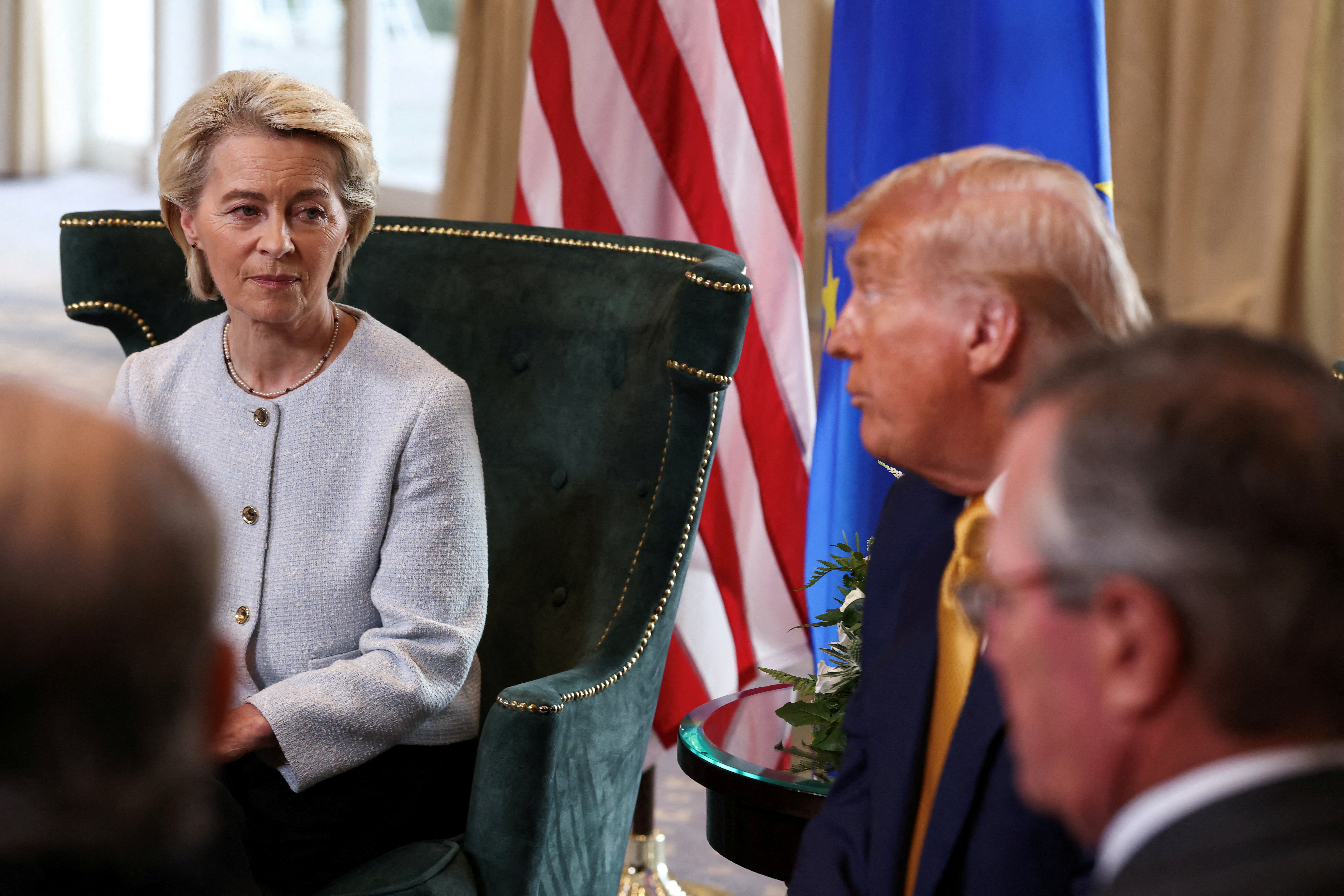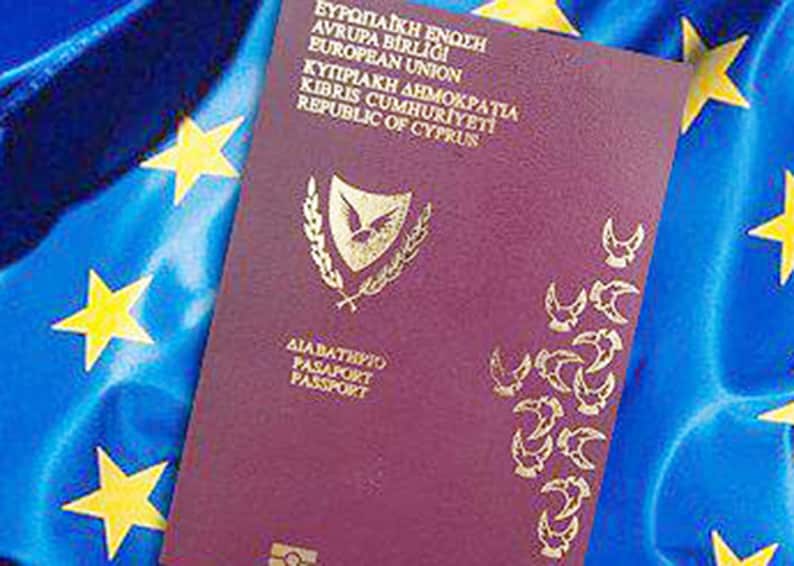The trade agreement between the EU and the United States was greeted as a humiliating event in European media. European Commission President Ursula von der Leyen met President Trump at his Scottish golf course in a display reminiscent of master and vassal. There was no real negotiation—von der Leyen simply capitulated to Trump’s demands. Europe didn’t lack bargaining power; it consciously chose not to exercise it. This decision can only be understood in a geopolitical context where Europe, divided and uncertain, is sacrificing its economic sovereignty for a tenuous promise of security. Its future course may be unsustainable within its current organizational structure.
This is still a framework agreement with details to be worked out, but the net assessment is clear: it’s bad for Europe. The United States will apply a 15 per cent tariff on most goods imported from the European Union, including automobiles and semiconductors. Punitive tariffs of 50 per cent on European steel and aluminum exports will remain in place. There will be no reciprocal tariffs from the European Union on American goods. The EU will purchase $750 billion worth of US Liquefied Natural Gas (LNG) and other energy products before the end of Trump’s current term. The EU will invest an additional $600 billion into the US economy over the same period. Europe will accelerate its rearmament, including substantial purchases of armaments from the United States.
For Europe, this means channelling billions into more expensive American LNG and weaponry, fuelling deficits and debt without increasing its own productive capacity. The trade rebalancing that will come about, will further reduce Europe’s already low growth.
Paying for protection
The reception across the EU was as baffling as the deal itself. German Chancellor Friedrich Merz expressed relief that the tariffs weren’t higher—a stark admission of weakness. The French were less accepting. Prime Minister Francois Bayrou posted on X: ‘It is a dark day when an alliance of free peoples, united to assert their values and defend their interests, resigns itself to submission.’
But for the EU leadership, the deal was never about trade. ‘It’s about security, it’s about Ukraine, it’s about current geopolitical volatility,’ explained Maros Sefcovic, the EU’s Commissioner for Trade and Economic Security.
Von der Leyen’s official statement echoed this, emphasizing the geopolitical pivot: ‘We will replace Russian gas and oil with significant purchases of US LNG, oil and nuclear fuels.’ She explicitly called the deal the ‘second building block, reaffirming the transatlantic partnership,’ referencing the NATO summit in The Hague last June. The unmistakable strategy is to keep America engaged in the war against Russia, and this framework is the price of that engagement. As President Trump reportedly told the press, ‘America is not going to pay the money for that [the Ukraine war]. Europe is going to pay the money, and it’ll pay it largely by buying American products.’
A flawed premise
To understand Europe’s predicament, one must grasp the fundamental schism between its ‘Atlanticists’ and its ‘Autonomists.’ The Atlanticists, who currently dominate the EU—figures like Ursula von der Leyen, Kaja Kallas, and Friedrich Merz—believe Europe’s interests are best served under the American strategic umbrella. The Autonomists—a diverse group including Hungary’s Victor Orban and perhaps even France’s Emmanuel Macron and Marine Le Pen—argue for a Europe that charts its own course based on its own interests. This deal is a monumental victory for the Atlanticist view. But this battle within Europe will only intensify as the evolution of war and economic rebalancing take unexpected shapes and forms.
However, this victory is built on a dangerously flawed premise: that the United States will continue to underwrite European security. As international relations scholar John Mearsheimer has long argued, America’s post-Cold War role as Europe’s ‘pacifier’ is ending. In this view, the US military presence and security guarantee through NATO served to keep peace between European powers and prevented the resurgence of rivalries that led to two world wars in the first half of the twentieth century. But the rise of China is forcing a strategic pivot to Asia, meaning the US military presence in Europe will inevitably diminish.
Furthermore, the NATO security guarantee is not the unconditional shield many believe it to be. The invocation of Article 5 is a political decision, not an automatic trigger. If a NATO member’s support for Ukraine provoked a direct Russian military response on its territory—such as Germany providing long-range missiles and firing them deep into Russia—it is far from certain that the US would risk nuclear escalation by invoking the collective defence clause. As the US pivots to Asia, the entire European security model, predicated on containing Russia with American backing, becomes unsustainable.
Economic blowback
While the Atlanticists in Europe and the globalists in the United States may see the deal as a strategic masterstroke, its economic consequences will be severe—not just for Europe, but for the United States as well.
America will discover that a trade war in a large and highly interconnected world is dangerous and lacks substance. Tariffs will be inflationary in the United States and deflationary everywhere else. A 15 per cent tariff on European imports is, in reality, a 15 per cent consumption tax on American consumers, unless they buy more American—a doubtful proposition, as goods are not easily substitutable.
With US goods imports at 11 per cent of GDP in 2024, a broad tariff regime could easily add 2 per cent to headline inflation. With core inflation already near 3 per cent, the US could face a sustained inflation rate of 5 per cent in 2026. This explains both the Federal Reserve’s reluctance to cut interest rates and the high yields on US Treasuries, currently 4.3 per cent versus the EU’s 2.3 per cent.
The implications go further. If inflation reaches 5 per cent in 2026, which is plausible given the current core inflation, then treasury yields will climb even higher. This will put enormous pressure on the federal budget. Gross interest payments were already 3.8 per cent of GDP, or about 13 per cent of total revenues at the federal and state levels in 2024.
Higher inflation and interest rates will put immense pressure on a federal budget already strained by massive debt, all while international appetite for that debt is waning.
The notion that these tariffs will magically re-industrialize America is also questionable. A 15 per cent tariff alone is unlikely to be enough to reshore complex supply chains. In combination with significantly cheaper energy in the US than in Europe, the prospect is more substantive but by no means guaranteed. The US is running chronic current account deficits, and that means that over time, in relative terms, the US is going to have to consume less and produce more. But that will also require a cheaper dollar in the process. The danger is that a forced rebalancing of the American economy might create unwanted macroeconomic instability, reflected in higher inflation, higher interest rates, and a declining dollar. If this starts to happen in the next year or two, we will be totally in uncharted waters.
Conclusion: A Union at a crossroads
This pact is more than a bad trade deal; it is a symptom of a deep strategic confusion at the heart of Europe. The Europeans are not prepared for the brutal realities of the emerging multipolar world. The continent is paying a steep price for American engagement at the very moment that shield is being withdrawn, leaving it economically weakened and strategically adrift in an increasingly turbulent world. The internal battle for Europe’s soul is set to intensify, as the unsustainable nature of this course becomes painfully clear.
Ioannis Tirkides is the Economics Research Manager at Bank of Cyprus and President of the Cyprus Economic Society. Views expressed are personal. The article is republished from the Blog of the Cyprus Economic Society (https://cypruseconomicsociety.org/blog/blog-posts/)







Click here to change your cookie preferences